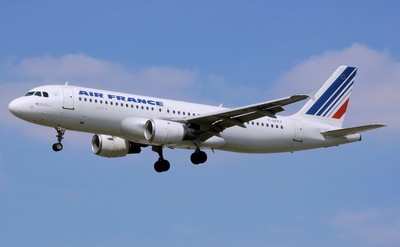Airline Updates Pitot Probe Info
 The feeding frenzy and guess work over Air France 447 has
reached a pretty high-pitch... so much so that we're loathe to add
to the mix with anything more than a "just the facts" approach.
While a number of media outlets are speculating wildly (including a
few folks with some modest aviation knowledge who are rushing to
judgment on an almost daily basis), the fact of the matter is
simple... all of the data that is coming in so far points to a
number of possibilities for what brought this airplane done... but
there is NO specific cause that can be derived at this point from
the info at hand... as much as the public would like for there to
be an easy simple answer and an even easier, simpler fix.
The feeding frenzy and guess work over Air France 447 has
reached a pretty high-pitch... so much so that we're loathe to add
to the mix with anything more than a "just the facts" approach.
While a number of media outlets are speculating wildly (including a
few folks with some modest aviation knowledge who are rushing to
judgment on an almost daily basis), the fact of the matter is
simple... all of the data that is coming in so far points to a
number of possibilities for what brought this airplane done... but
there is NO specific cause that can be derived at this point from
the info at hand... as much as the public would like for there to
be an easy simple answer and an even easier, simpler fix.
That being said, we present the following PUBLISHED STATEMENT
from Air France in an attempt to dampen a little of the rampant
speculation and finger-pointing that is going on.
Update On Anemometric Sensors (from Air France)
Following the many questions which have appeared in the media on
the issue of the Pitot probes in its fleet (the Pitot probe is one
of the instrument which calculates the air speed of the aircraft),
Air France wishes to make the following clarifications:
1) Malfunctions in the Pitot probes on the A 320 led the
manufacturer to issue a recommendation in September 2007 to change
the probes. This recommendation also applies to long-haul aircraft
using the same probes and on which a very few incidents of a
similar nature had occurred.

It should be noted that a recommendation from the manufacturer
gives the operator total freedom to apply the corresponding
guidelines fully, partially or not at all. Should flight safety be
concerned, the manufacturer, together with the authorities, issues
a mandatory service bulletin followed by an airworthiness directive
(AD).
The recommendation to change the probes was implemented by Air
France on its A320 fleet where this type of incident involving
water ingress at low altitude had been observed. It was not
implemented on the A340/330s as no such incidents had been
noted.
2) Starting in May 2008 Air France experienced incidents
involving a loss of airspeed data in flight, in cruise phase on
A340s and A330s. These incidents were analysed with Airbus as
resulting from pitot probe icing for a few minutes, after which the
phenomenon disappeared. Discussions subsequently took place with
the manufacturer. Air France asked for a solution which would
reduce or eliminate the occurrence of these incidents. In response
to these requests, the manufacturer indicated that the probe model
recommended for the A320 was not designed to prevent such incidents
which took place at high-altitude cruise levels, and reiterated the
operational procedures well-known to the crews.

In the first quarter of 2009 laboratory tests suggested,
however, that the new probe could represent a valuable improvement
to reduce the incidence of high altitude airspeed discrepancy
resulting from pitot probe icing, and an in service evaluation in
real flight conditions was proposed by Airbus. Without waiting for
the in service evaluation, Air France decided to replace all its
probes and the programme was launched on 27 April 2009.
Without making any assumptions as to a possible link with the
causes of the accident, Air France speeded up this programme and
reminded its pilots of the current instructions issued by the
manufacturer to cope with the potential loss of airspeed data.
 Unfortunate... ANN/SportPlane Resource Guide Adds To Cautionary Advisories
Unfortunate... ANN/SportPlane Resource Guide Adds To Cautionary Advisories ANN FAQ: Turn On Post Notifications
ANN FAQ: Turn On Post Notifications ANN's Daily Aero-Term (04.29.24): Visual Approach Slope Indicator (VASI)
ANN's Daily Aero-Term (04.29.24): Visual Approach Slope Indicator (VASI) ANN's Daily Aero-Term (04.28.24): Airport Marking Aids
ANN's Daily Aero-Term (04.28.24): Airport Marking Aids ANN's Daily Aero-Linx (04.28.24)
ANN's Daily Aero-Linx (04.28.24)





